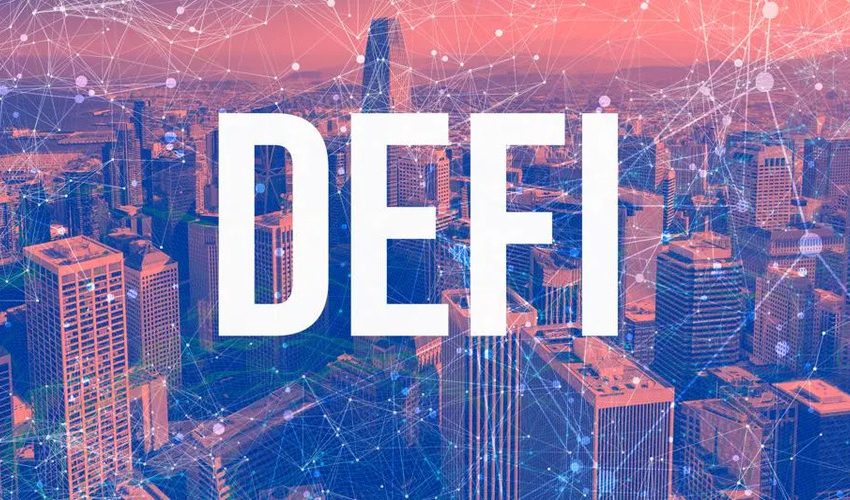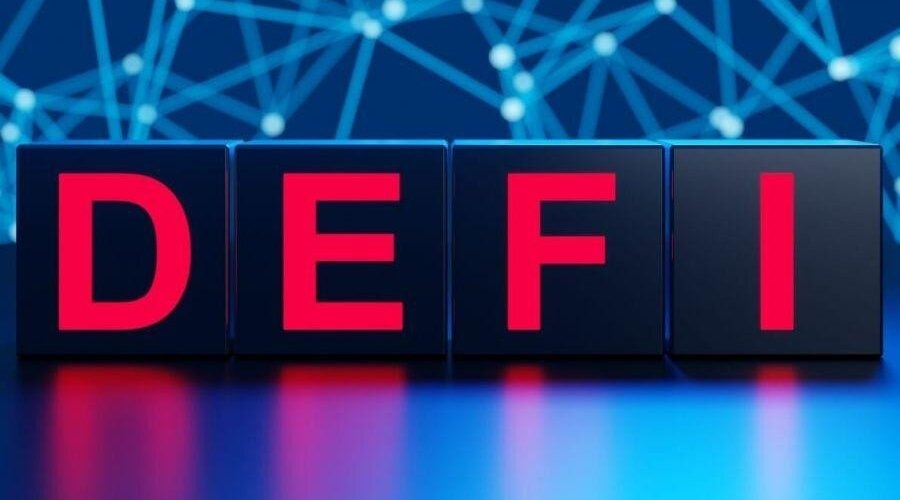
Security Considerations for DeFi Lending and Borrowing Protocols
The rapid rise of decentralized finance (DeFi) has revolutionized the traditional financial landscape, providing individuals with new opportunities to lend, borrow, and earn interest on their digital assets. DeFi lending and borrowing protocols, powered by smart contracts and blockchain technology, have gained significant popularity due to their efficiency, transparency, and potential for high returns. However, this innovative ecosystem also brings forth various security considerations that must be addressed to ensure the safety and trust of users.
Introduction to DeFi Lending and Borrowing Protocols
DeFi lending and borrowing protocols enable individuals to lend their cryptocurrencies and earn interest or borrow assets by collateralizing their existing holdings. These protocols operate on blockchain networks, eliminating intermediaries and enabling peer-to-peer transactions with automated smart contracts. The underlying principle is to create a decentralized lending market where lenders and borrowers can interact directly, eliminating the need for traditional financial institutions.
The Growth of DeFi and Its Security Implications
The explosive growth of the DeFi industry has attracted billions of dollars in investments and user participation. While this growth signifies the potential of DeFi, it also amplifies the security implications associated with it. DeFi protocols are built on smart contracts, which are self-executing contracts with predefined rules and conditions. However, smart contracts are not immune to vulnerabilities, and any flaw in the code can result in substantial financial losses.
Understanding Security Risks in DeFi Lending and Borrowing Protocols
- Smart Contract Vulnerabilities: Smart contracts are the backbone of DeFi protocols. However, they can be susceptible to coding errors or vulnerabilities, leading to exploitation by malicious actors. Common vulnerabilities include reentrancy attacks, unchecked external calls, and integer overflow/underflow.
- Oracle Manipulation: DeFi protocols rely on oracles to fetch external data, such as asset prices, to execute transactions. If oracles are compromised or manipulated, attackers can provide false data to smart contracts, leading to incorrect decisions and potential financial losses.
- Governance Attacks: DeFi protocols often have governance mechanisms that allow token holders to vote on critical decisions. However, these mechanisms can be targeted by attackers who accumulate a significant number of tokens or exploit governance flaws to manipulate voting outcomes.
- Economic Exploits: DeFi protocols involve various economic incentives and mechanisms to encourage participation. Attackers can exploit these mechanisms by engaging in activities like flash loans, arbitrage opportunities, or liquidity pool manipulations to gain unfair advantages.
Best Practices for Enhancing Security in DeFi Lending and Borrowing Protocols
To address the security risks associated with DeFi lending and borrowing protocols, several best practices can be implemented:
- Code Audits and Formal Verification: Thorough code audits by security experts and utilizing formal verification techniques can help identify and fix vulnerabilities in smart contracts before they are deployed. This ensures that the code is robust and resistant to attacks.
- Security Tokens and Multisig Wallets: Implementing security tokens and utilizing multisig wallets can enhance the protection of users’ funds. Security tokens can add an extra layer of authentication, while multisig wallets require multiple signatures for transactions, reducing the risk of unauthorized access.
- Integration of Oracles and Data Sources: Careful selection and integration of reliable oracles and data sources are crucial for maintaining the integrity of data used by DeFi protocols. Implementing multiple oracles and using consensus algorithms can help mitigate the risk of oracle manipulation.
- Effective Governance Mechanisms: Designing governance mechanisms that ensure decentralization, transparency, and participation can help prevent governance attacks. Implementing voting thresholds and time locks can also add additional security layers to the decision-making process.
- User Education and Awareness: Educating users about the risks and best practices of using DeFi protocols is essential. Providing clear instructions, warnings about potential risks, and promoting security measures can empower users to make informed decisions and protect their assets.
Regulatory and Compliance Considerations of DeFi Lending and Borrowing Protocols
As DeFi protocols continue to gain popularity, regulatory and compliance considerations come to the forefront:
- Legal Landscape for DeFi: The regulatory environment surrounding DeFi is still evolving, with different jurisdictions taking varied approaches. Understanding the legal landscape and complying with relevant regulations is crucial for the long-term sustainability of DeFi projects.
- KYC/AML Requirements: DeFi protocols that involve lending and borrowing may face Know Your Customer (KYC) and Anti-Money Laundering (AML) requirements. Implementing appropriate KYC/AML procedures can help mitigate risks associated with money laundering and fraud.
- Privacy and Data Protection: DeFi protocols handle sensitive user data, such as wallet addresses and transaction history. Ensuring robust privacy and data protection measures, such as encryption and secure storage, is vital to protect user information from unauthorized access.
- Cross-Border Regulatory Challenges: DeFi operates on a global scale, which presents challenges when it comes to cross-border regulations. Complying with regulations in multiple jurisdictions can be complex and requires careful navigation to avoid legal complications.
Insurance and Risk Management Solutions for DeFi Lending and Borrowing Protocols
The emergence of DeFi insurance plays a crucial role in mitigating risks and providing users with an additional layer of protection. DeFi insurance providers offer coverage against smart contract vulnerabilities, oracle failures, and other risks associated with DeFi protocols. Risk assessment and management strategies, collaboration with traditional finance, and establishing effective insurance mechanisms can contribute to the overall security and stability of DeFi.
The Rise of DeFi and its Security Implications

The decentralized finance (DeFi) ecosystem has experienced exponential growth in recent years. With a multitude of platforms and applications enabling various financial services, such as lending, borrowing, trading, and yield farming, the total value locked in DeFi protocols has reached staggering figures. While this growth is indicative of the industry’s potential, it also attracts the attention of hackers and malicious actors looking to exploit vulnerabilities for financial gain.
Smart Contract Vulnerabilities and Exploits of DeFi Lending and Borrowing Protocols
Smart contracts, the self-executing agreements that power DeFi protocols, are at the core of this innovative ecosystem. However, they are not immune to vulnerabilities. Flaws in smart contract code can be exploited, leading to financial losses for users. Examples of smart contract vulnerabilities include reentrancy attacks, where malicious actors exploit the recursive nature of contract calls to drain funds, and integer overflow/underflow, which can result in unintended behaviors and financial imbalances.
To mitigate these risks, developers must prioritize secure coding practices, conduct rigorous audits, and perform comprehensive testing to identify and eliminate vulnerabilities before deployment. The use of formal verification techniques can provide further assurance that smart contracts behave as intended and are free from critical flaws.
The Role of Oracles and Data Integrity
DeFi protocols rely on oracles to fetch real-world data, such as asset prices or interest rates, to execute transactions and trigger various functionalities. However, oracles present a potential weak point in the security of the system. If compromised or manipulated, they can provide inaccurate or malicious data, leading to incorrect financial decisions and potential losses for users.
To enhance security, protocols should carefully select reputable oracles and implement robust mechanisms to ensure data integrity. This can include using multiple oracles to achieve consensus, integrating reputation systems to evaluate the reliability of data sources, and implementing fail-safe mechanisms to detect and mitigate oracle failures or manipulation attempts.
Governance Attacks and Decentralized Governance
Decentralized governance is a fundamental characteristic of many DeFi protocols, allowing token holders to participate in decision-making processes. While governance empowers the community, it also introduces the risk of governance attacks, where malicious actors accumulate tokens to control the decision-making process and manipulate protocol parameters for their benefit.
To address this risk, protocols can implement voting mechanisms that consider the balance of voting power, introduce time locks to prevent hasty decisions, and establish thresholds to ensure significant changes require broad community consensus. Additionally, implementing reputation systems or reputation-weighted voting can incentivize responsible governance and discourage manipulation attempts.
Economic Exploits and Risk Management
The dynamic and complex nature of DeFi protocols introduces various economic exploits that attackers can leverage to gain unfair advantages. Flash loans, for example, allow users to borrow significant amounts of assets without collateral as long as the loan is repaid within a single transaction. While flash loans provide opportunities for arbitrage and liquidity provision, they can also be exploited to manipulate markets or execute malicious actions.
Risk management is crucial in addressing economic exploits. Protocols can implement circuit breakers or pause mechanisms to halt certain functionalities in the event of unusual or suspicious activities. Additionally, integrating robust risk assessment models and monitoring tools can help detect and mitigate potential risks associated with economic exploits.
Balancing Innovation and Security in DeFi Lending and Borrowing Protocols
Maintaining a balance between innovation and security is essential for the sustainable growth of the DeFi industry. To achieve this, the following measures can be adopted:
- The Importance of Iterative Development: DeFi protocols should follow an iterative development process, where constant improvements and bug fixes are implemented. Regular software updates and community engagement can help identify and address security issues promptly.
- Bug Bounty Programs and Security Audits: Encouraging responsible disclosure of vulnerabilities through bug bounty programs incentivizes security researchers to identify and report potential flaws. Regular security audits by reputable firms also contribute to a more robust and secure ecosystem.
- Transparency and Open-Source Collaboration: Transparency in the development process, including open-source code and peer review, fosters trust among users. Collaborative efforts and information sharing within the DeFi community can accelerate security enhancements and knowledge dissemination.
Conclusion
As DeFi lending and borrowing protocols continue to reshape the financial landscape, security considerations are of paramount importance. Smart contract vulnerabilities, oracle manipulation, governance attacks, and economic exploits pose significant risks that must be addressed through best practices and proactive measures. The integration of security measures, user education, regulatory compliance, insurance solutions, and a balanced approach to innovation and security are crucial for building a secure and sustainable DeFi ecosystem.
FAQs
- What are the key security risks in DeFi lending and borrowing protocols?
- Smart contract vulnerabilities, oracle manipulation, governance attacks, and economic exploits are the primary security risks in DeFi lending and borrowing protocols.
- How can users protect themselves from potential attacks in DeFi?
- Users can protect themselves by conducting thorough research, utilizing security measures like multisig wallets, being cautious of potential scams, and staying informed about the latest security practices.
- Are DeFi protocols regulated?
- The regulatory landscape for DeFi is still evolving, and regulations vary across jurisdictions. It’s essential to stay updated on relevant regulations and comply with applicable laws.
- What role does insurance play in mitigating risks in DeFi?
- DeFi insurance provides users with an additional layer of protection against risks associated with smart contract vulnerabilities, oracle failures, and other potential threats.
- How can the DeFi industry ensure both innovation and security?
- The DeFi industry can achieve a balance between innovation and security through iterative development, bug bounty programs, security audits, transparency, and collaboration within the community.
